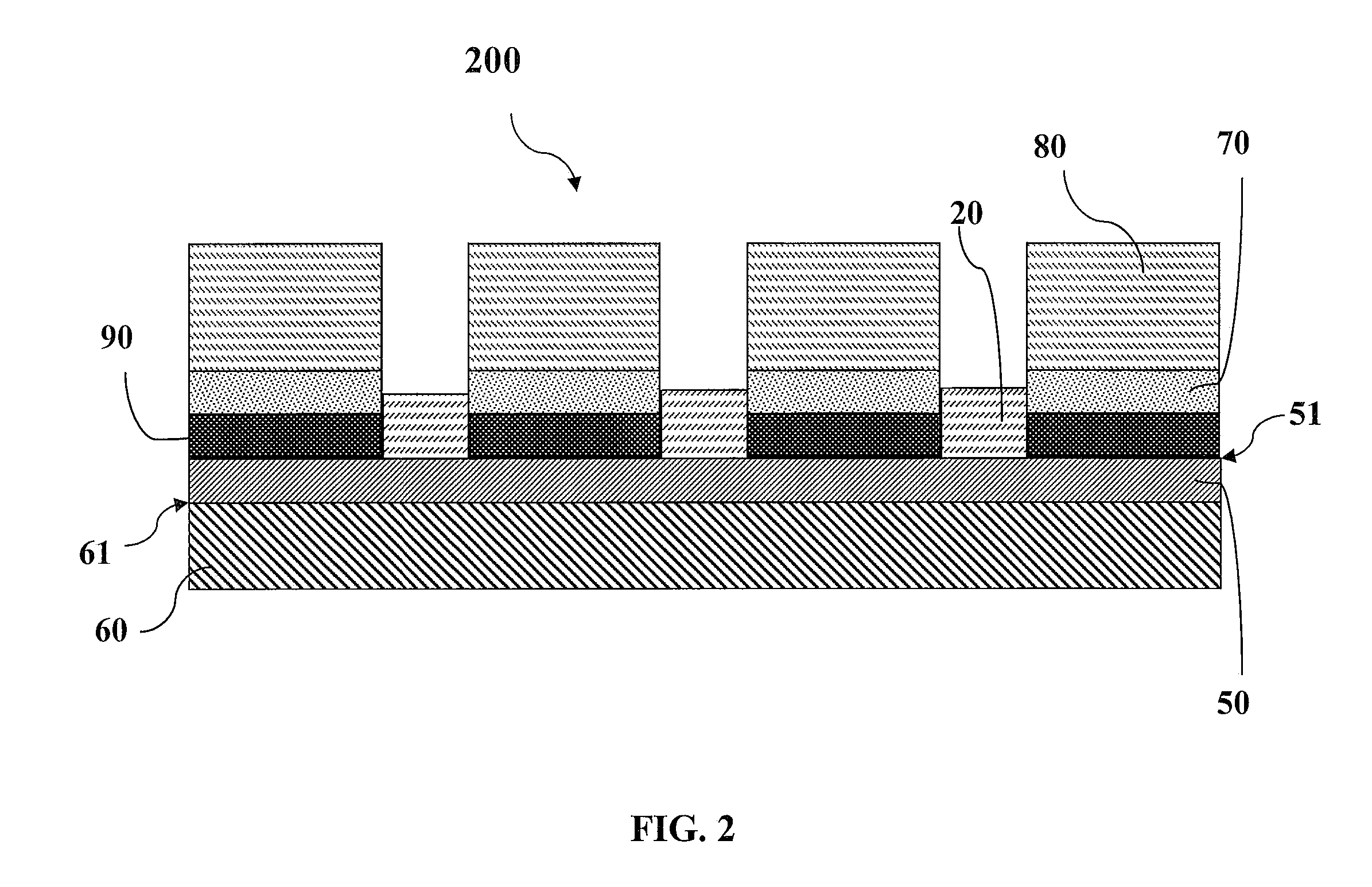Multifilament Superconductor Having Reduced AC Losses and Method for Forming the Same
- Summary
- Abstract
- Description
- Claims
- Application Information
AI Technical Summary
Benefits of technology
Problems solved by technology
Method used
Image
Examples
Embodiment Construction
[0029]OVERVIEW: The present disclosure eliminates the filamentary etching process that has been ubiquitously used to fabricate multi-filamentary 2G HTS wire. More specifically, this disclosure is directed to multifilament HTS coated conductors and the etch-free method of fabricating the same. In accordance with one embodiment of the disclosure, the etch-free fabrication of a multifilament AC tolerant superconductor comprises the deposition of the at least one insulating filament prior to deposition of the superconducting material. In accordance with another embodiment of the disclosure, the etch-free fabrication of a multi-filament AC tolerant superconductor comprises the deposition of the superconducting material prior to the deposition of at least one insulating filament and subsequent heat treatment.
[0030]MULTIFILAMENT HTS: FIG. 1 shows a multifilament HTS structure that is in accordance with an exemplary embodiment of the present disclosure. The embodiment shown in FIG. 1 shows ...
PUM
 Login to View More
Login to View More Abstract
Description
Claims
Application Information
 Login to View More
Login to View More - R&D
- Intellectual Property
- Life Sciences
- Materials
- Tech Scout
- Unparalleled Data Quality
- Higher Quality Content
- 60% Fewer Hallucinations
Browse by: Latest US Patents, China's latest patents, Technical Efficacy Thesaurus, Application Domain, Technology Topic, Popular Technical Reports.
© 2025 PatSnap. All rights reserved.Legal|Privacy policy|Modern Slavery Act Transparency Statement|Sitemap|About US| Contact US: help@patsnap.com



